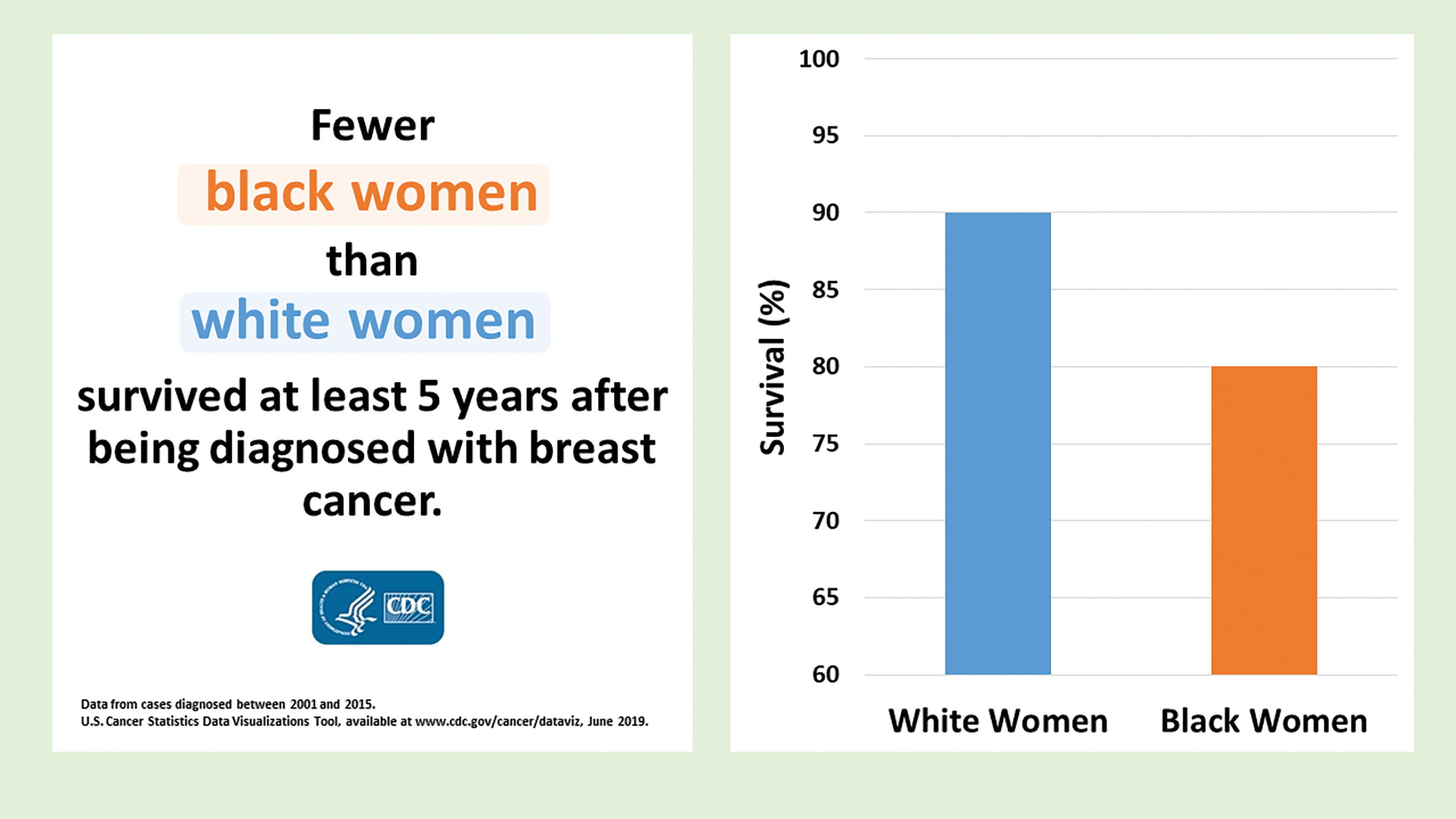By Jacqueline Miller, MD
Although death rates from breast cancer have been falling, the trend has not been equal among all women. Looking at breast cancer survival on a population level can tell us how effective our public health and healthcare systems are at early diagnosis, delivery of evidence-based treatment, and management of follow-up care.
In 2017, the Centers for Disease Control and Prevention (CDC) published a comprehensive series of articles on five-year survival across several cancers. For breast cancer, five-year survival for all women was high—around 90%—but survival was more than 10% lower among African American women compared with white women. The difference persisted across a 10-year span, suggesting that racial inequalities still exist despite great advances in breast cancer treatment options.
Why Inequalities Exist
According to CDC’s 2017 report, breast cancer is often diagnosed at later stages and is more aggressive in African American women. American Indian and Alaska Native women are more often diagnosed at younger ages and have worse survival after diagnosis. And, for women in rural areas, the decrease in breast cancer mortality has been slower. This means that improving early diagnosis and timeliness of treatment are critical in those populations.
Many barriers contribute to the inequalities, such as lack of access to high-quality medical care, lack of transportation, mistrust of the healthcare system, and financial stress that can lead to delays in treatment and ultimately affect cancer outcomes, CDC reported. In addition, comorbidities such as obesity, diabetes, heart disease, and hypertension are more common among racial minorities and rural women, which may affect their ability to receive or complete treatment.
What Oncology Nurses Can Do About It
Improving equity in breast cancer treatment and survival requires a coordinated team approach with physicians, nurses, patient navigators, social workers, and others. More efforts are needed to address the social and economic factors, as well as the comorbidities and biologic characteristics of breast cancer that may affect outcomes.
After a breast cancer diagnosis, patients must understand their disease and treatment plan. Identifying and addressing barriers, educating patients on healthy lifestyles, and improving comorbid conditions can help women have the best opportunity to receive the cancer treatment they need. Oncology nurses educate, navigate, and advocate for all patients with cancer. The key is all women getting the right treatment at the right time.







